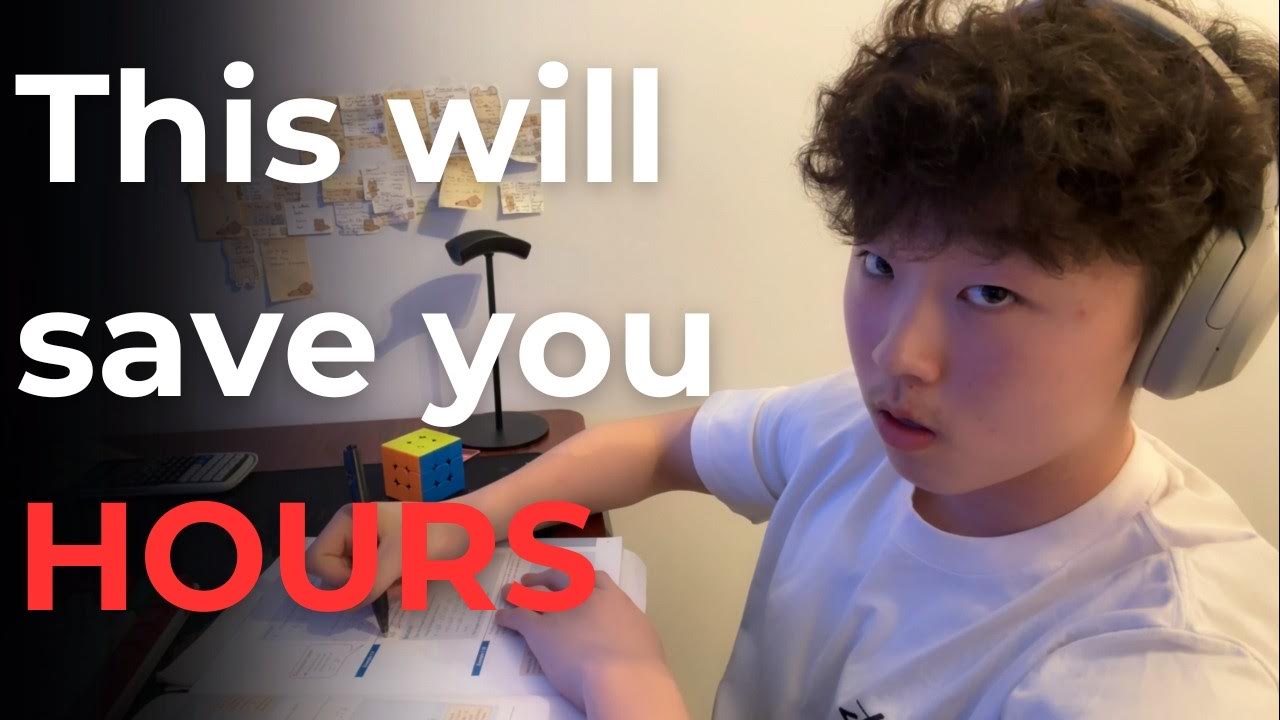The Daily Routine That Changed My Life
Summary
TLDRThe video emphasizes the importance of creating a personalized daily routine that aligns with your life goals. It compares setting goals to using a GPS, where clear direction is essential for success. The speaker discusses the need to focus on key life areas—work, health, and relationships—and prioritize impactful tasks early in the day. They also highlight the significance of sustaining this routine without burnout by incorporating flexibility, restorative breaks, and social time. Finally, the speaker suggests making the process enjoyable through accountability and engagement with like-minded communities.
Takeaways
- 🔄 Successful people consistently follow daily routines that align with their goals, unlike others who do things occasionally.
- 📍 To achieve your goals, it's essential to have a clear direction and routine that supports your objectives, similar to setting a GPS for a road trip.
- 🎯 Identify your life’s key areas: work/career, health, and relationships, then prioritize improving the area that will have the biggest impact.
- 📝 Structure your day by focusing on high-priority tasks first, especially those that are challenging but will move you toward your goals.
- ⏰ Start your day with the most important tasks when your energy and focus are highest, rather than waiting until later.
- 🏃♂️ Maintain a sustainable routine by including productive tasks in the morning and ensuring you have enough energy and motivation throughout the day.
- 📅 Create a consistent daily schedule, similar to a school timetable, to build strong habits and avoid burnout.
- 📵 Cut out sources of instant gratification and distractions, such as excessive social media, for a more productive and focused routine.
- 💪 Incorporating physical activities, like working out earlier in the day, and cold showers can boost energy and productivity.
- 👥 Balance productivity with social and relationship time to ensure that all pillars of life are fulfilled, creating a well-rounded routine.
Q & A
What is the main idea of the video?
-The video explains how to create a daily routine that is both productive and sustainable, enabling individuals to achieve their goals without burning out.
Why does the speaker compare creating a daily routine to setting a GPS destination?
-The comparison is made to emphasize the importance of having a clear direction in life. Without a defined destination or goal, you won’t be able to achieve the results you desire, just like you wouldn’t reach your intended location if your GPS is set incorrectly.
What are the three main areas of life that most people focus on?
-The three main areas of life mentioned are work/career, health, and relationships.
How does the speaker suggest starting the day to ensure productivity?
-The speaker recommends starting the day with 'priority one' tasks, which are the most impactful and often the most difficult tasks. Completing these first sets a productive tone for the rest of the day.
Why is it important to avoid 'cheap dopamine' in your daily routine?
-Cheap dopamine, like social media or video games, overstimulates the brain and makes it harder to focus on tasks that require effort. Avoiding these distractions helps create a routine that is more sustainable and productive.
What does the speaker mean by creating a ‘monk mode’ or ‘dopamine detox’ routine?
-A 'monk mode' or 'dopamine detox' routine involves eliminating instant gratification activities, like excessive screen time, in order to focus better on meaningful tasks and achieve long-term goals.
What role does flexibility play in a daily routine?
-Flexibility is important because it allows you to adapt when unexpected events occur later in the day. As long as high-priority tasks are completed earlier, deviations from the plan won't affect overall progress.
Why is working out earlier in the day beneficial according to the speaker?
-Working out earlier in the day boosts energy levels and productivity. It also reduces the chance of skipping workouts, as spontaneous events are less likely to interfere early in the day.
How does the speaker recommend handling decisions about specific tasks within time blocks?
-The speaker suggests planning the specific tasks the night before, treating that time as a ‘pilot’ role. The next day, you become the ‘passenger,’ simply executing the pre-made decisions to avoid impulsive changes.
What is the importance of restorative breaks, and what should they consist of?
-Restorative breaks are important for giving the brain time to relax and recharge. These breaks should involve activities that don’t require intense focus, such as walking, stretching, or deep breathing, rather than stimulating activities like watching videos or using social media.
Outlines

此内容仅限付费用户访问。 请升级后访问。
立即升级Mindmap

此内容仅限付费用户访问。 请升级后访问。
立即升级Keywords

此内容仅限付费用户访问。 请升级后访问。
立即升级Highlights

此内容仅限付费用户访问。 请升级后访问。
立即升级Transcripts

此内容仅限付费用户访问。 请升级后访问。
立即升级浏览更多相关视频

7 hábitos (simples) que farão de 2025 o melhor ano da sua vida

Why 90% of People NEVER Get Lean (Do This Instead)

If you wanna reach success as a guy, try this routine...

How to manage time like a TOP student

Oprah Winfrey Motivation: Educate Yourself Daily | Listen this Everyday (Must Watch !)

You have been making vision boards wrong.
5.0 / 5 (0 votes)
